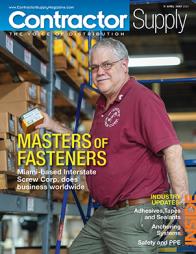NIOSH Issues Heat Safety Advisory
Offers tips for preventing heat-related illness.
A recently released Health Hazard Evaluation Report from the National Institute for Occupational Safety and Health (NIOSH) is raising awareness of the risks of working in extreme heat.
The report, which is based on an evaluation of heat stress at a national park, provides recommendations that can be applied to other worksites where extreme heat may be a factor.
Heat-related illnesses are the body’s response to a hot environment and outdoor workers are at especially at risk of heat-related illness during the hot summer months. Working in hot environments and/or prolonged exertion can raise the body’s temperature, resulting in heat stress in workers.
Heat stress may lead to heat exhaustion, heat cramps, heat rashes, and heat stroke. Heat stroke is the most severe form of heat related illness and can be fatal if not quickly treated.
The symptoms of heat stroke include a change in mental status that can range from confusion or bizarre behavior to seizures or loss of consciousness.
Employers should establish a heat illness prevention program that should include assigning outdoor tasks at night or during cooler weather if possible, providing rest periods in shaded or cool areas, ensuring employees have access to water or other hydrating beverages, implementing a mandatory buddy system, and training workers to recognize symptoms of heat-related illness. This is essential as someone with heat stroke often will not be aware they are not functioning normally.
Another key to preventing heat-related illness is to acclimatize workers and allow frequent breaks for new workers or those who have been away for a week or more to build a tolerance for working in the heat. Acclimatization is the adjustment the body makes after being gradually exposed to hot environments. If you have pre-existing medical conditions, a doctor should clear you before starting work in a hot environment.
Some helpful tips for outdoor workers to help prevent heat related illness and fatalities:
- Learn the signs of heat illness and what to do in an emergency.
- Keep an eye on fellow workers and call for help immediately if they become confused or act strangely during work in a hot environment. Move them to a cool area immediately.
- Drink water frequently, even if you are not thirsty. By the time you become thirsty, you are already dehydrated.
- Use water and low sugar beverages to rehydrate. Avoid alcohol and caffeine in hot environments as these will cause you to become dehydrated quicker.
- Rest in an air conditioned or shaded area to cool down.
- Wear a hat and light-colored/light weight clothing.
- "Easy does it" on your first days of work in the heat. You need to get used to it.
For more information on acclimatization and preventing heat-related illnesses, please visit: http://www.cdc.gov/niosh/topics/heatstress/
To view a copy of the recent Health Hazard Evaluation report that examined heat stress at a national park, go to: http://www.cdc.gov/niosh/hhe/reports/pdfs/2013-0109-3214.pdf
To learn more about the Health Hazard Evaluation Program and how to request a Health Hazard Evaluation go to http://www.cdc.gov/niosh/hhe.
NIOSH is the federal agency that conducts research and makes recommendations for preventing work-related injuries and illnesses. It was established under the Occupational Safety and Health Act of 1970. For further information, visit www.cdc.gov/niosh.















